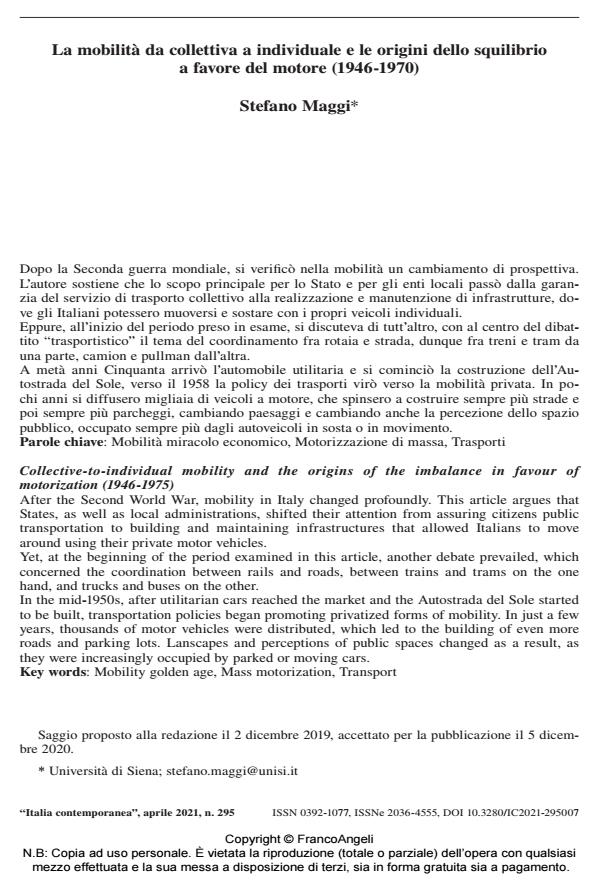Collective-to-individual mobility and the origins of the imbalance in favour of motorization (1946-1975)
Journal title ITALIA CONTEMPORANEA
Author/s Stefano Maggi
Publishing Year 2021 Issue 2021/295
Language Italian Pages 24 P. 141-164 File size 179 KB
DOI 10.3280/IC2021-295007
DOI is like a bar code for intellectual property: to have more infomation
click here
Below, you can see the article first page
If you want to buy this article in PDF format, you can do it, following the instructions to buy download credits

FrancoAngeli is member of Publishers International Linking Association, Inc (PILA), a not-for-profit association which run the CrossRef service enabling links to and from online scholarly content.
After the Second World War, mobility in Italy changed profoundly. This article argues that States, as well as local administrations, shifted their attention from assuring citizens public transportation to building and maintaining infrastructures that allowed Italians to move around using their private motor vehicles. Yet, at the beginning of the period examined in this article, another debate prevailed, which concerned the coordination between rails and roads, between trains and trams on the one hand, and trucks and buses on the other. In the mid-1950s, after utilitarian cars reached the market and the Autostrada del Sole started to be built, transportation policies began promoting privatized forms of mobility. In just a few years, thousands of motor vehicles were distributed, which led to the building of even more roads and parking lots. Lanscapes and perceptions of public spaces changed as a result, as they were increasingly occupied by parked or moving cars.
Keywords: Mobility golden age, Mass motorization, Transport
Stefano Maggi, La mobilità da collettiva a individuale e le origini dello squilibrio a favore del motore (1946-1970) in "ITALIA CONTEMPORANEA" 295/2021, pp 141-164, DOI: 10.3280/IC2021-295007